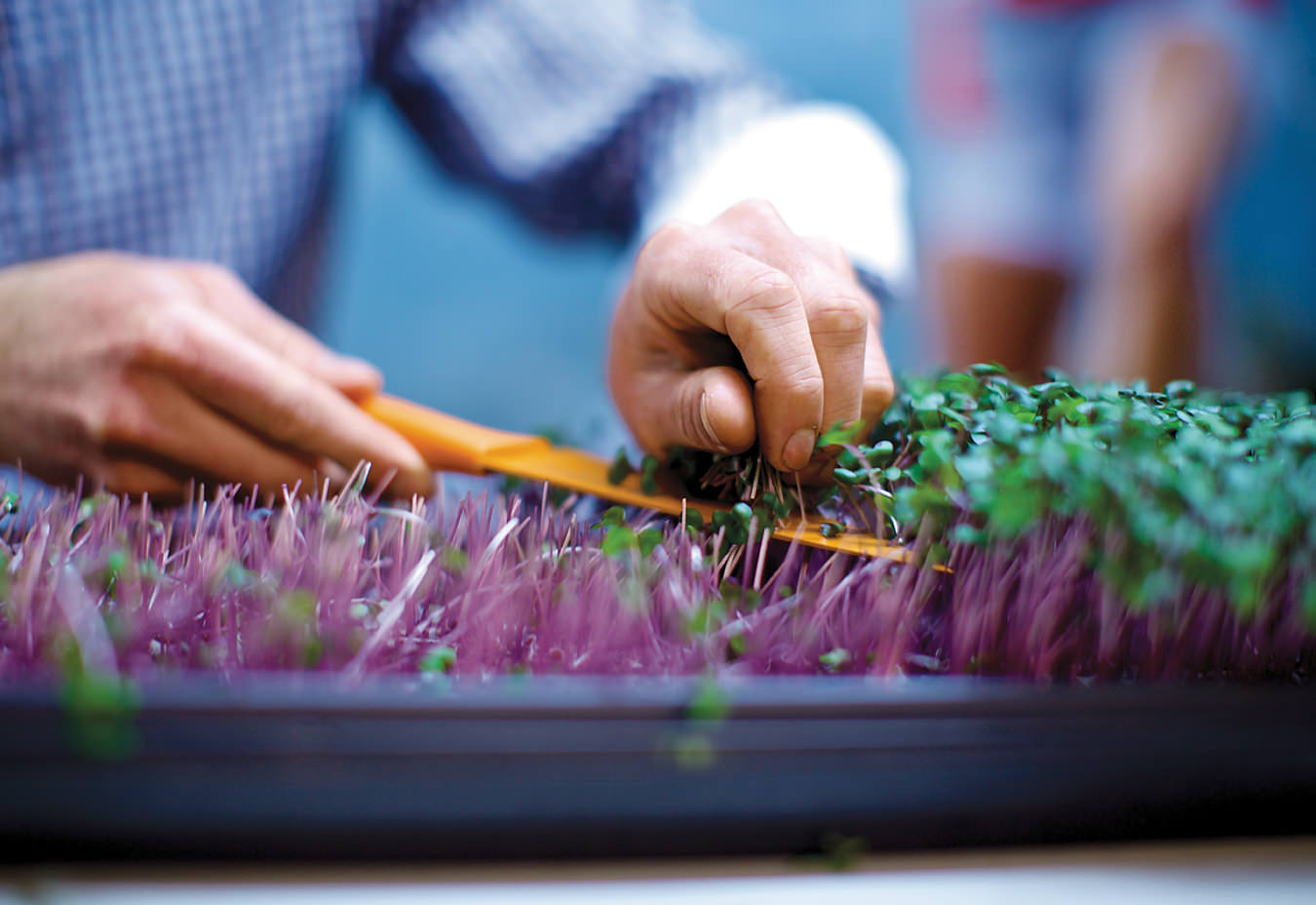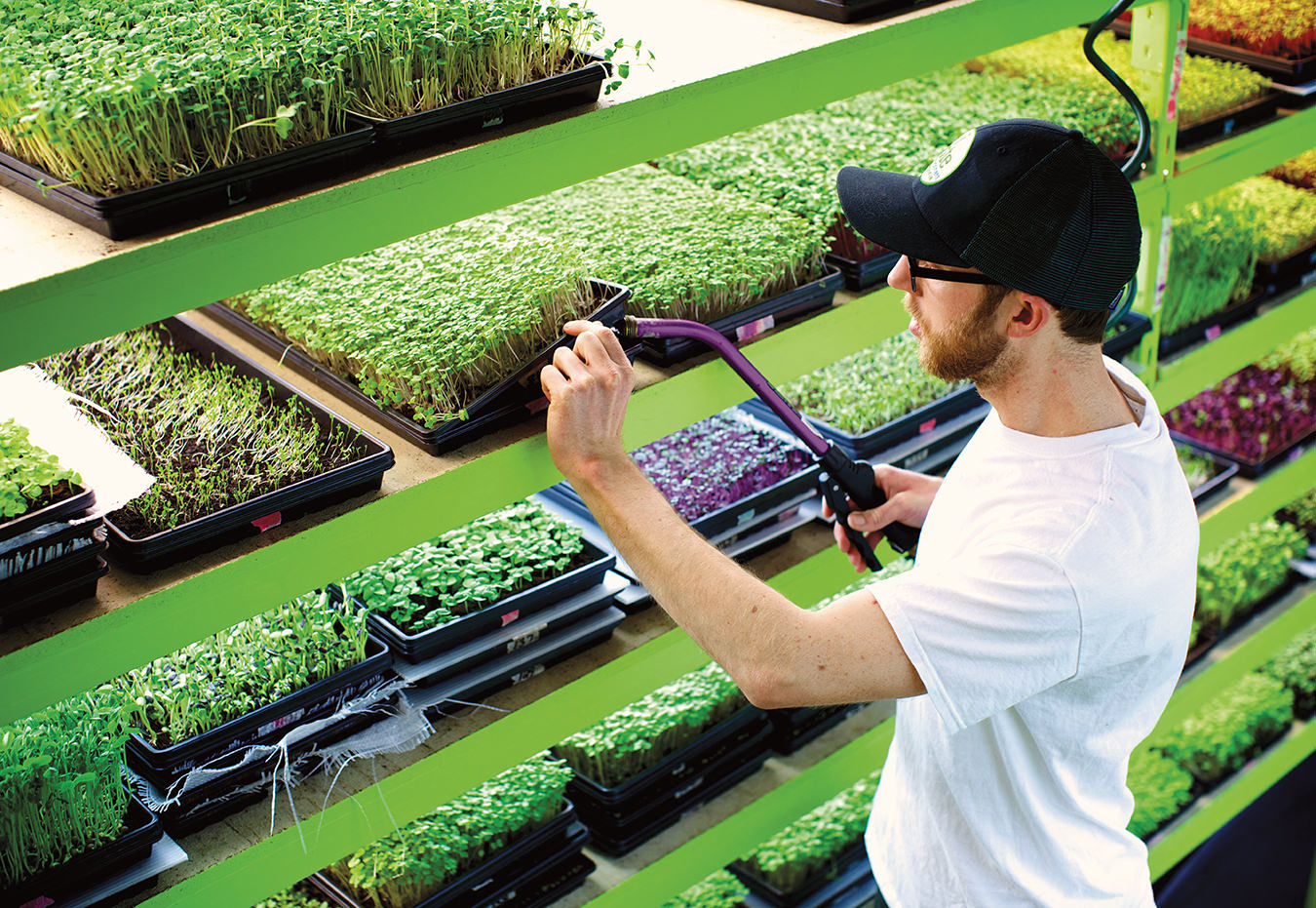A hairnet-clad Aaron Quesnel moves around his East Vancouver warehouse, pointing out various kinds of itty bitty crops. White radish; red daikon; purple cabbage; arugula; basil; lime basil; peppercress. Racks and racks of little trays filled with microgreens line the space, appearing almost ethereal thanks to overhead lights, creating a sort of hum, as if the small plants are buzzing to life. And though many of them look the same, the nearly 20 varieties on hand at Sky Harvest, Quesnel’s urban farm, each taste incredibly unique, and require a very special routine of care, from soil and water to time under light and ideal harvest period. “It’s very labour intensive,” Quesnel says of coaxing the crops to grow. “These little plants are very needy and sensitive.”
Quesnel began Sky Harvest, which is Canada’s first Certified Organic urban farm, in 2011, after doing a master’s thesis in Sweden on rooftop agriculture. “The goal was to try to figure out where were some leverage points to drive sustainability in cities, and food was one of them,” he explains. “So I looked at different mechanisms for how bringing food into the city could be done sustainably and be a viable business. I looked at a rooftop greenhouse as an avenue, and that has a lot of potential, for sure, but it also has a very high capital cost.” So he turned his sights inside buildings instead of on top of them.
The premise of Sky Harvest is simple: Quesnel and his team of “microgreen specialists” plant, tend to, and harvest (gently, and by hand) approximately 20 different crops, following a strict schedule drilled down to the hour. Once packaged, the little greens are delivered by Sky Harvest staff that same day by bike; it’s a crucial feature of the farm’s business model. “Sustainability is pretty much why the company started,” Quesnel explains. “Some rainy winter days it would be sweet to hop in a vehicle, but we don’t do it. We suit up and hit the monsoon.” Sky Harvest supplies microgreens to some of the city’s most popular restaurants, including Cioppino’s Mediterranean Grill & Enoteca (chef Pino Posteraro was one of their first customers, in fact), La Pentola, and Bao Down, as well as hotels including the Fairmont Pacific Rim. The company also sells at some Choices Markets around the city, and through grocery delivery service SPUD.
As Quesnel tours around the room, he cuts off samples of each green, and they certainly hold undeniable freshness and flavour; pea shoots are crisp and crunchy, while licorice mint is fantastically potent. And though they are mostly known for being a pop of pretty colour used for garnish, microgreens also actually hold many health benefits. Due to their tiny size, they are a wildly dense nutrient source, with certain crops such as daikon radish being high in antioxidants and certain vitamins. Of course, the little things do taste great, too: in salads and wraps, on sandwiches and tacos, mixed with pastas, sprinkled on soups. Even the micro can be mighty.
Taste more from our Dining section.









